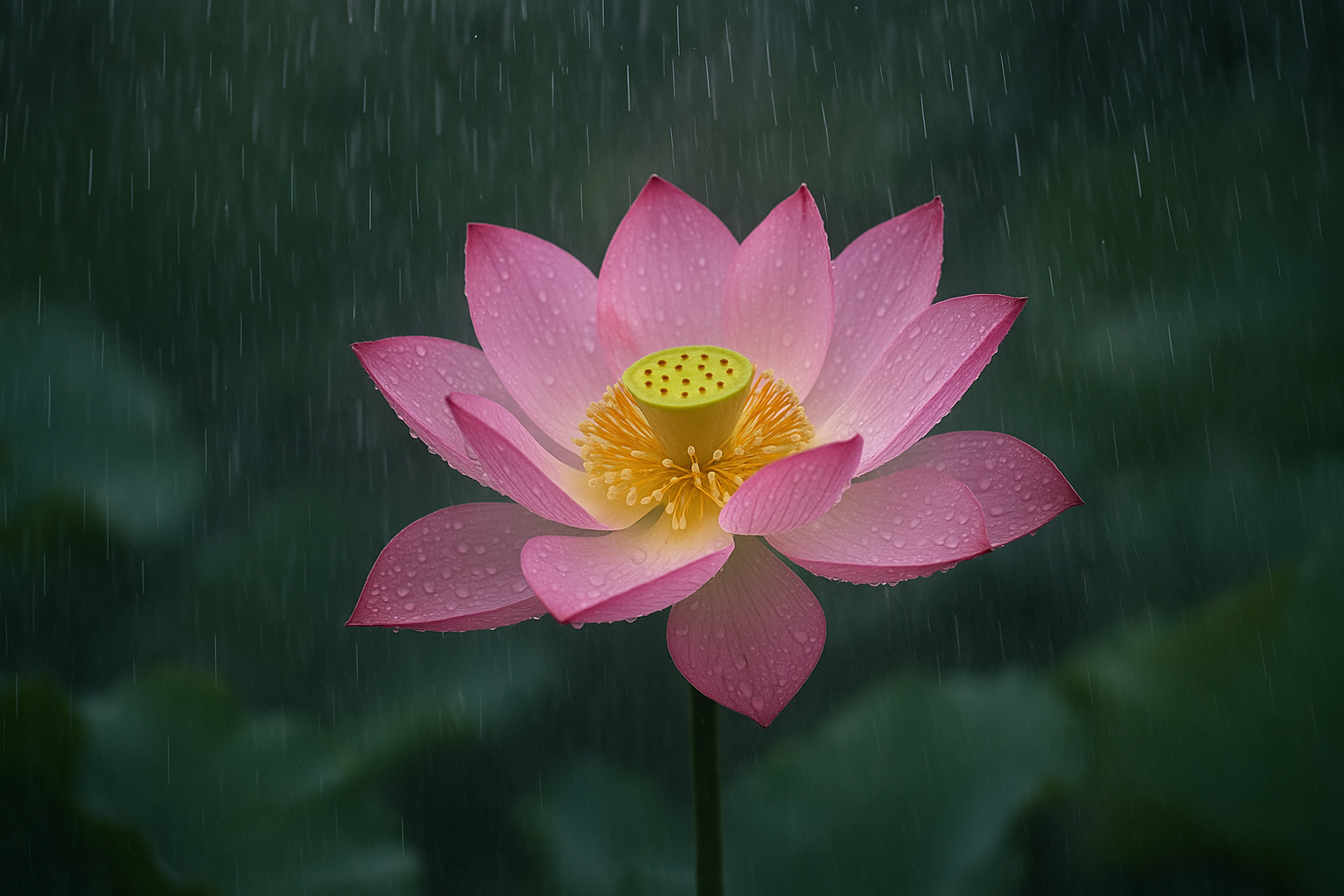Lotus in the Rain: Soft Resilience of the Daoist Heart
In the swirling dance of existence, where the grasp of life often brings moments of turbulence and adversity, the Daoist heart stands as a beacon of subtle strength and resilience. Like the enduring lotus blooming elegantly amidst the rain, this gentle resilience offers profound insights into navigating the storms of life with grace and equanimity. The teachings of Daoism, deeply rooted in harmony with nature and the universe, illuminate a path to inner peace and fortitude.
Understanding Daoism
Daoism (or Taoism), a philosophical and religious tradition that originated in China, draws its wisdom from core texts such as the Tao Te Ching by Laozi and the Zhuangzi compiled by Zhuang Zhou. The philosophical underpinnings of Daoism emphasize living in harmony with the Dao, which Liu Yiming once described as “the way that can be told of is not an eternal way; the name that can be named is not an eternal name” (Tao Te Ching, Chapter 1). This highlights the ineffable and profound nature of the Dao, a concept inviting practitioners to explore living softly and naturally.
The Symbolism of the Lotus
The lotus, a powerful symbol in many Eastern philosophies, encapsulates the essence of resilience insightful to the Daoist approach. It grows in muddy waters yet rises clean and beautiful, untouched by the dirt from which it originates. In this, the lotus becomes a metaphor for human potential and spiritual awakening amid life’s complexities.
“As a lotus flower is born in water, grows in water and rises out of water to stand above it unsoiled, so I, born in the world, raised in the world having overcome the world, live unsoiled by the world.”
Soft Resilience in Daoism
Daoism teaches us that true strength is not rigid but supple and flexible. This is beautifully captured in the concept of Wu Wei, often translated as “non-action” or “effortless action.” Rather than forcing circumstances to change through sheer will, Daoism encourages us to align with the natural flow of life. As Laozi eloquently states, “The softest of all things overrides the hardest of all things” (Tao Te Ching, Chapter 43).
- Adaptability: Just as a tree bends with the wind to avoid breaking, embracing change and being adaptable is essential for resilience. This adaptability allows one to grow and evolve without being crushed by life’s adversities.
- Simplicity: Living a life of simplicity and humility aligns with the Daoist path. It reduces the complexities and burdens that often cloud judgment and hinder personal growth.
- Mindfulness: A focus on the present moment fosters a direct connection with the natural world, offering clarity and peace in times of disturbance.
Implications for Modern Life
In today’s fast-paced world, the Daoist heart’s soft resilience offers much-needed relief from the relentless demands and pressures. By embodying the principles of Wu Wei and the tranquility of the lotus, individuals can achieve a state of balance and satisfaction not through control but through acceptance and trust in the natural order of things.
Practically, adopting Daoist principles can manifest across various areas of life:
- In Personal Life: Cultivating a mindful practice, such as meditation or tai chi, can enhance one’s ability to remain centered amidst chaos. Acknowledging and appreciating the simple things can also foster contentment.
- In Professional Settings: Promoting a culture that values collaboration over competition, and creativity over strict adherence to rules, aligns well with Daoist philosophy and can lead to a more resilient and innovative workplace.
Conclusion
The lotus in the rain stands as a living testament to the soft resilience of the Daoist heart. In embracing the principles of adaptability, simplicity, and mindfulness, we can find our strongest selves in our gentlest moments. As the world continues to shift, there remains a timeless wisdom in looking to nature and the Dao to guide us through life’s complexities.
As the renowned psychologist Carl Jung noted, “The deeper we reveal our strengths when we are in harmony with our essential natures, which is often best understood through the wisdom of ancient philosophies such as Daoism.” It’s a gentle reminder that our greatest power often lies within our gentlest embrace of life’s natural ebb and flow.

